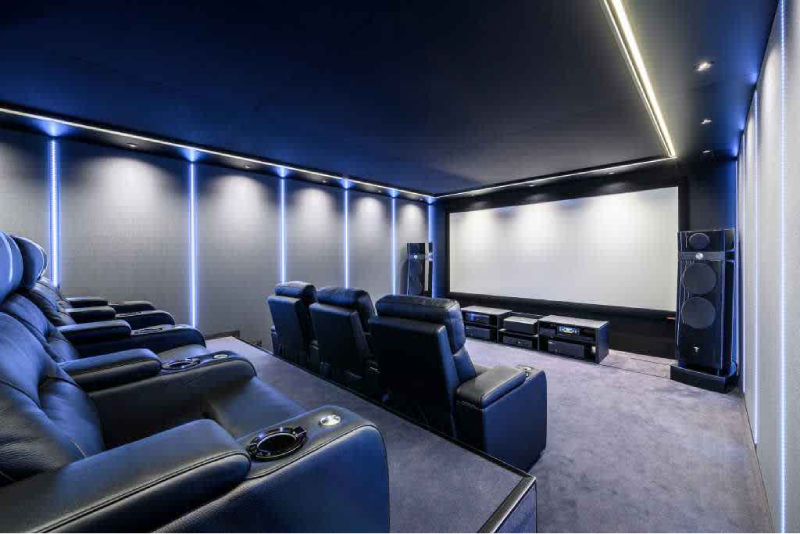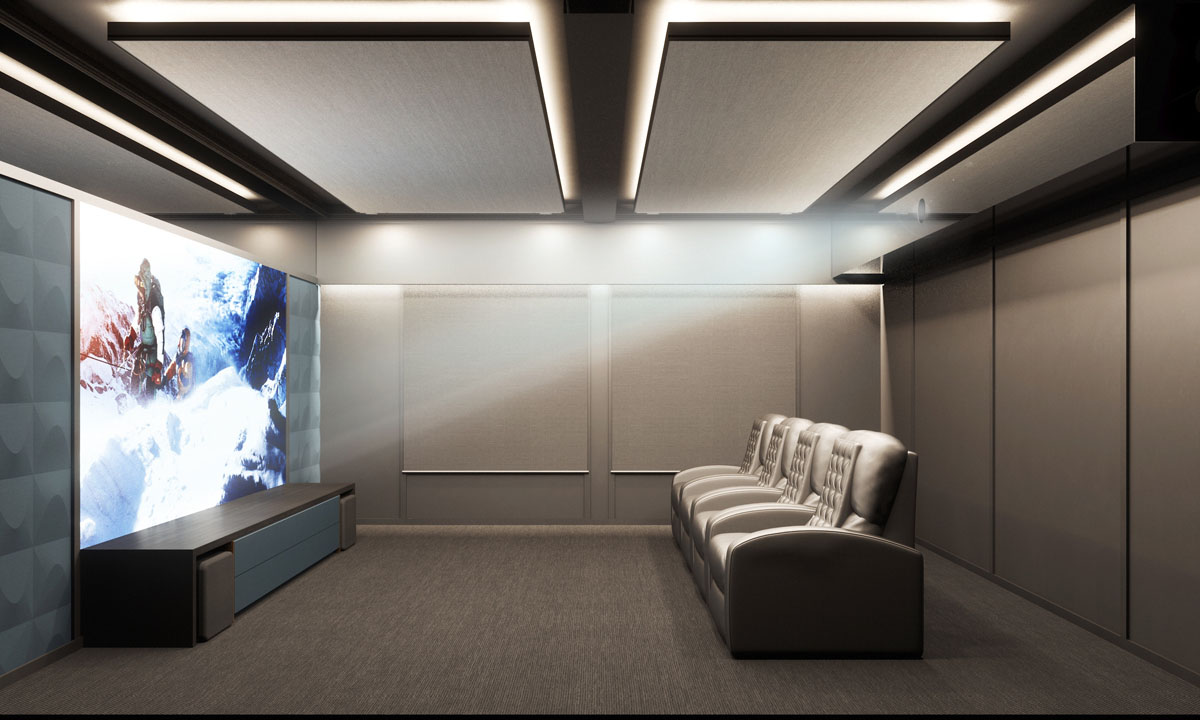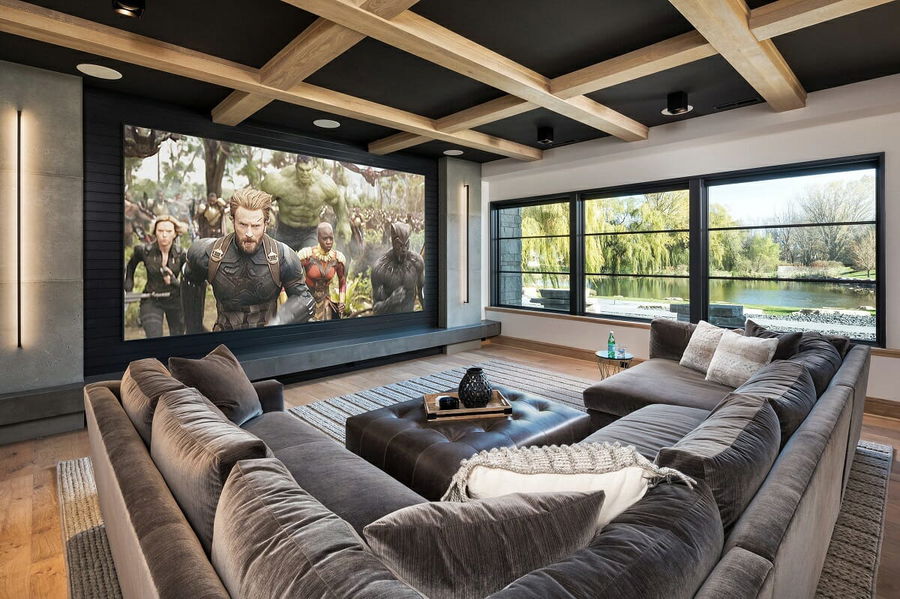Expert Home Theater Tampa Design for Every Budget
Expert Home Theater Tampa Design for Every Budget
Blog Article
Home Theater 101: Whatever You Required to Know for a Cinematic Experience at Home
Developing a home theater that equals the cinematic experience of an industrial theater involves careful consideration of several parts, including screen selection, sound systems, and room format. Whether you are pondering the ideal screen dimension or the intricacies of surround audio, understanding these fundamentals is vital.
Selecting the Right Screen
When establishing a home movie theater, selecting the appropriate display can make or break the watching experience - tampa home theater. The screen works as the focal point of your configuration, affecting image quality, viewing angles, and general aesthetic. Secret variables to consider consist of display resolution, size, and kind
Initially, establish the suitable screen size based upon your area dimensions and seating range. A general guideline is to rest around 1.5 to 2.5 times the angled display size for ideal viewing. Next off, select in between numerous display types, such as fixed-frame, mechanized, or retractable displays, each offering unique benefits. Fixed-frame screens commonly give the best image high quality, while mechanized choices permit flexibility precede usage.
Resolution is one more important variable. For a really immersive experience, consider a screen created for 4K or also 8K content, making sure intensity and clearness. In addition, consider the screen's gain, which influences brightness and contrast; a greater gain can improve brightness in well-lit rooms, while a lower gain might be a lot more appropriate for darker settings.
Picking Audio Equipment
Audio tools is a critical element of any home theater system, substantially enhancing the total viewing experience. The choice of audio gear can determine the deepness, clearness, and immersion of audio, vital for creating a cinematic ambience.
When choosing audio devices, take into consideration a border audio system, which typically consists of a receiver, several speakers, and a subwoofer. A 5.1 or 7.1 channel system is suggested, where the very first number stands for the audio speakers and the second the speaker, offering an immersive soundscape. The receiver is the heart of the system, managing sound and video signals, and should support contemporary styles like Dolby Atmos for an enhanced spatial experience.
Quality audio speakers are important; try to find designs that supply a well balanced sound account with excellent bass feedback. Floor-standing speakers can produce richer noise, while shelf alternatives save space. Furthermore, consider wireless options for simplicity of installation, although wired systems often deliver remarkable performance.

Optimal Seating Plans
Creating a suitable home movie theater experience pivots dramatically on ideal seating arrangements. The setup of seats plays a critical function in both convenience and viewing top quality, straight influencing the total cinematic experience.
First, consider the display size and viewing distance. A typical standard is to position seats at a range roughly 1.5 to 2.5 times the angled size of the screen. This guarantees an immersive experience without stressing the eyes.
Following, elevation is important. The back rows must be higher than the front to avoid blockages if your seats is in a tiered format. For level seating, ensure that the front row is not too near to the screen, and that everybody has a clear line of sight.
Furthermore, take into consideration the setup in regards to social dynamics. Team seats can boost the public experience, while private seats might be chosen for personal watching.

Lastly, focus on comfort with ergonomic seats that supports extended viewing periods. Incorporating reclining chairs or supported seats can substantially enhance the experience, making the home cinema a preferred destination for both enjoyment and relaxation.
Lighting and Atmosphere
Effective lighting and setting are important components of a well-designed home theater, as they considerably affect the viewing experience. The right lights can boost the cinematic feeling, while inadequate options can interfere with it. For optimum results, think about a split illumination technique that includes ambient, task, and accent lights.
Ambient illumination offers basic lighting, guaranteeing that the area is not entirely dark, which can stress the eyes. Dimmer switches are extremely suggested, permitting modifications based on the content being official source viewed. Task lights, such as wall sconces or floor lights, offers functional illumination for tasks like analysis or browsing the space without disrupting the general environment.
Accent lighting can be made use of to highlight building features or create prime focus, including deepness and passion to the room. LED strip lights behind displays or along racks can offer a refined glow that enhances the visual experience without frustrating the visitor.

Wiring and Installation Tips
A tactical circuitry setup is critical for attaining ideal efficiency in your home movie theater system. Appropriate wiring not just makes certain high-quality audio and video clip signals but likewise improves the general visual of your space. Begin by mapping out your layout, determining where each component will be positioned, including your screen, speakers, and receiver.
When selecting cords, focus on premium, properly evaluated circuitry to minimize signal loss. HDMI wires need to be utilized for video clip links, while speaker cord need to match the specifications of your audio speakers and amplifier. Select in-wall rated cables to conform with safety criteria and keep a tidy appearance.

Final Thought
In recap, creating an outstanding home movie theater experience needs cautious factor to consider of various aspects, consisting of display selection, audio tools, seating plans, illumination, and circuitry. By prioritizing these variables, a cinematic atmosphere can be efficiently duplicated, allowing for immersive checking out experiences that match typical theater setups.
Developing a home theater that measures up to the cinematic experience of a business theater includes mindful consideration of numerous components, consisting of screen choice, audio systems, and area layout.When setting up visit the site a home cinema, picking the best screen can make or break the seeing experience. Next, select between various display types, such as fixed-frame, motorized, or retracting screens, each offering distinctive advantages. For a genuinely immersive experience, think about a display developed for 4K or also 8K web content, ensuring sharpness and clarity.In recap, developing an exceptional home cinema experience calls for cautious factor to consider of numerous elements, including screen choice, audio devices, seating setups, illumination, and electrical wiring.
Report this page